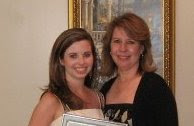Greetings everyone! Today we are excited to have a guest blogger! Philip J Reed, on behalf of Westwood College, has provided us with an article about games to use in therapy! Westwood offers many programs, including speech-language pathology.
5 Popular Games for Speech Therapy:
It doesn't matter if you have a
medical assistant degree or any degree at all; it’s common sense that the easiest way to get through to a patient or a child is to involve them in things they are already interested in. That’s why it’s important in SLP to make speech exercises fun.
A simple way to do this is to use familiar games in order to get your young patients to work on their speech skills. After all, not all children will find speech exercises inherently exciting. In fact, they may even want to skip speech sessions if they become routinely dull. But what child wouldn't want to come to therapy if it meant playing games he or she already enjoys?
Here are some familiar games you may already have that can be used as learning tools for the children that you see.
Memory is one simple game to be used in order to practice speech, and there are many variations you should be able to find. The game involves arranging cards face-down on a table, and flipping over cards two at a time to find matches. Ask the child to name the objects pictured as he or she picks up the cards. After the game is over, the child can repeat all of the cards to you. You can even create laminated cards for your young learner to take home so that they can play with their family.
Go Fish is also a great card game to be used in order to practice speech skills. Again, you can create your own laminated cards for a child using words which they need to practice. For example, if a specific child has trouble with "r blends", then you can create cards which have pictures of objects whose names involve these blends. The concept of the game stays the same as do the rules; it is just that the cards are a little bit different.
Clue is another great game to use to practice speech skills. If your client is a younger child, you can use Clue Jr. Have the child discuss what is happening at every stage of the game, and discuss possibilities for how the case might pan out. Invent backstories or side-stories for the characters to really get your young learner involved, and always allow your patient to elaborate or suggest story ideas!
Candyland can also be used to help young clients with speech skills, especially if they are very resistant to therapy. You can have the child practice saying the colors of the walkway as well as the names of the characters. As a special treat, you may even reward the child with a lollipop at the end of the session. Just make sure you keep them involved; this game shouldn’t turn into a passive story-time. Encourage them to speak up, and describe how the different areas of the board look to them, preferably using recent vocabulary words they have studied!
Bingo can also be used as a learning tool. Many educational stores sell different versions of the game including versions with letters, colors or objects. Some versions of the game which teach phonics have beginning and ending word blends. These versions are very helpful if your local store carries them. If not, you can again create your own game using the words or sounds that you want your child to practice. Make sure to laminate your boards in order to have them hold up a little bit longer.
Whatever game you may choose to play with your patients, remember that the most important thing is that they are engaged in the activity. What works for one child may not work at all for another, so experiment and find something that’s both fun and useful!

